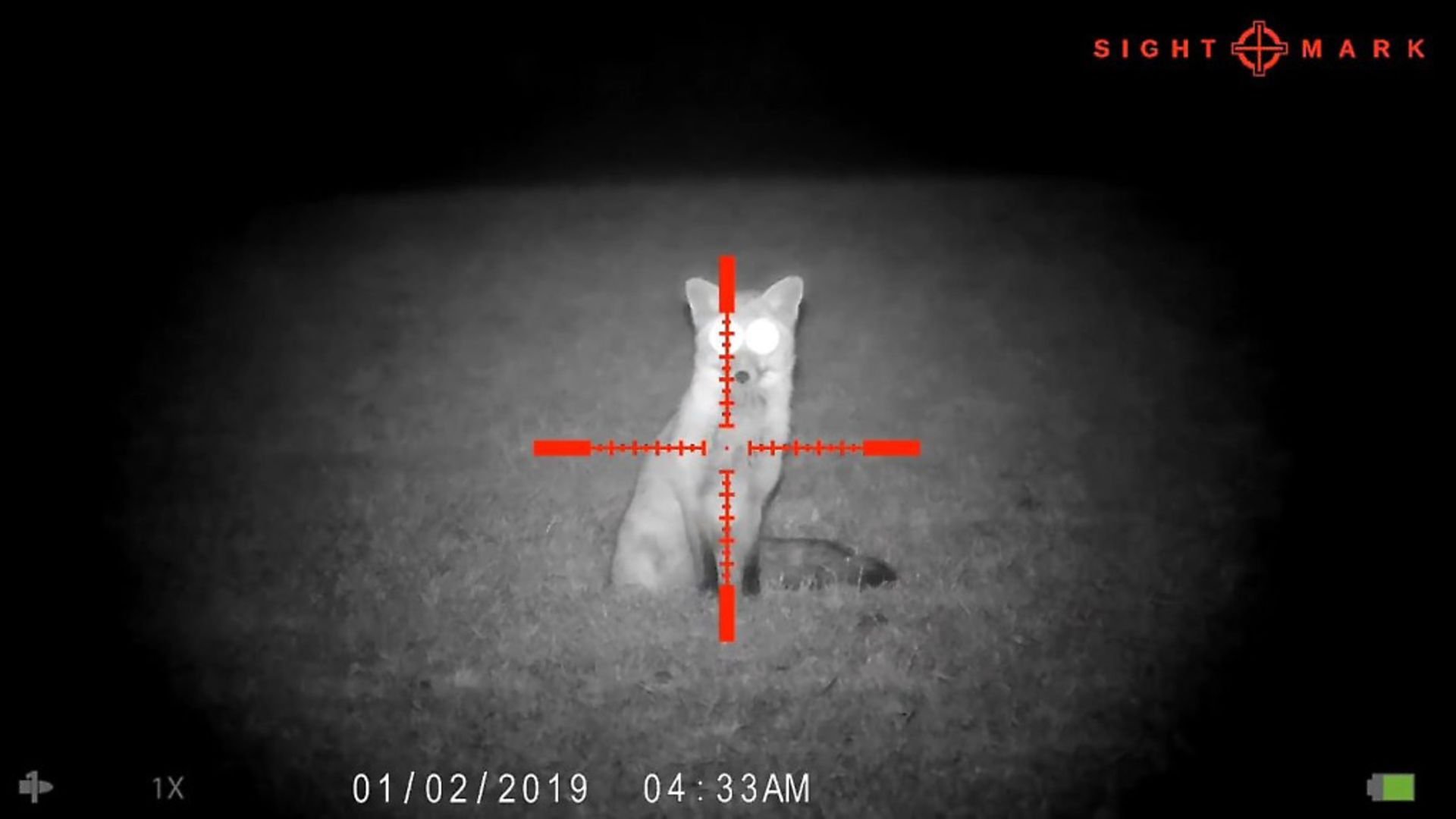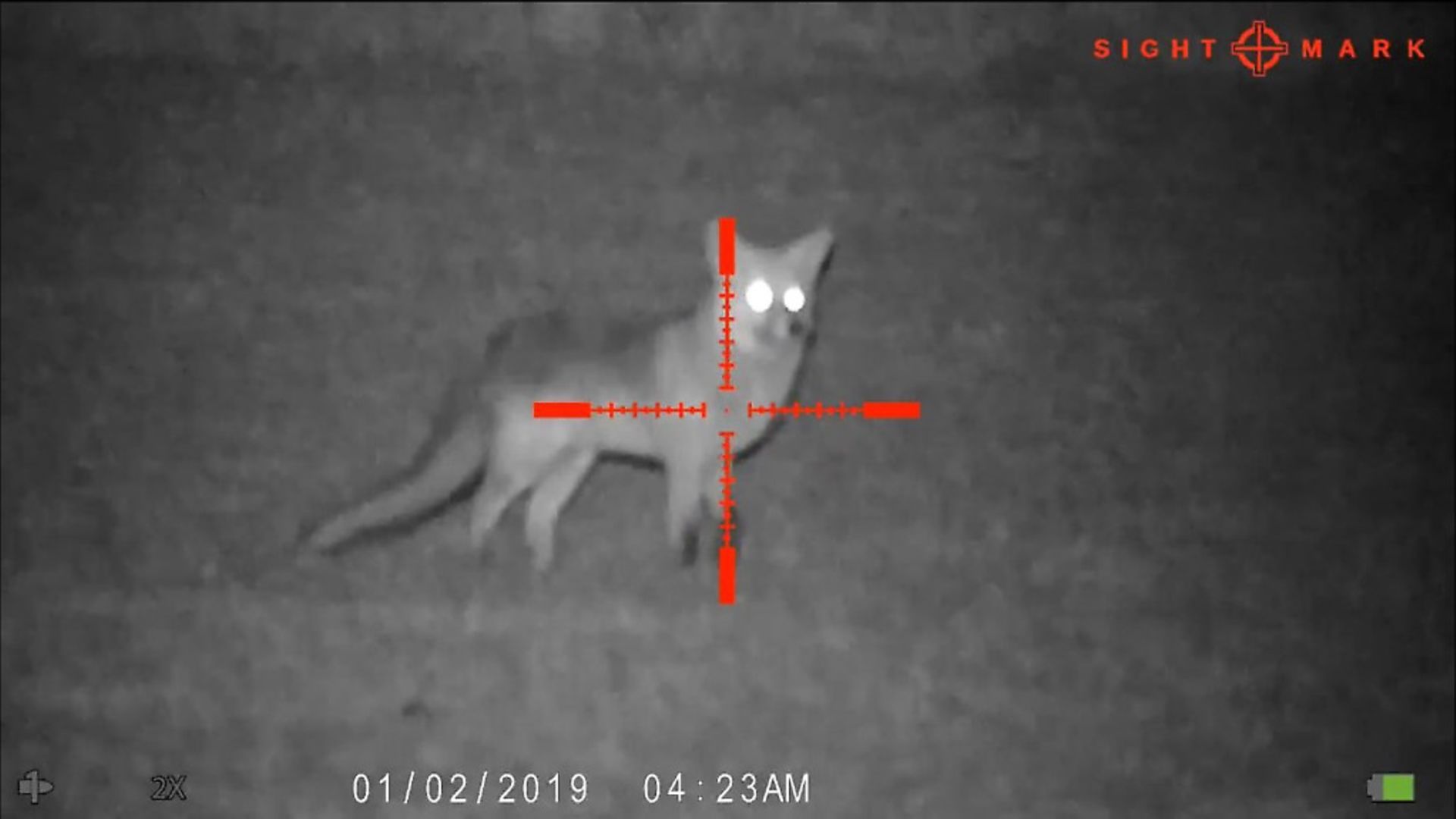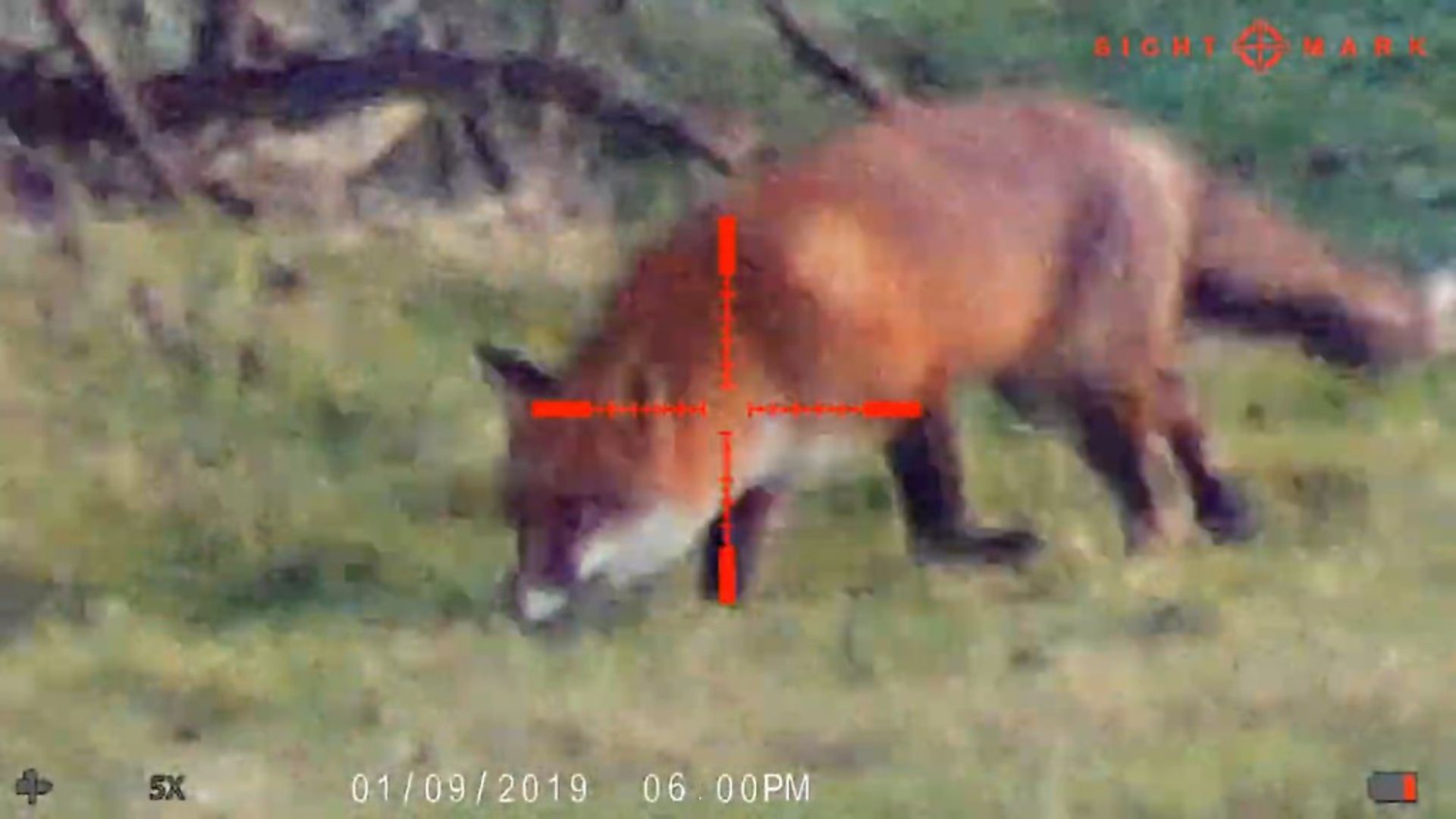The fox mating season - January - is the ideal time to control numbers; Mark Ripley explains how to use it to your advantage
 credit: Archant
credit: Archant
There was hardly a breath of wind, and the frost had lain on the grass and trees the entire day, along with the ice that had formed in thin sheets across the muddy puddles and gateways. Everywhere crunched underfoot, making it difficult to walk quietly.
I’d already seen a fox from the farm driveway when I pulled in, but despite being as quick as I could gathering my gear together and loading the rifle, I didn’t hold out much hope that it would still be in the field. This was early for a fox to be out, with still another half hour or so before dusk, but being the beginning of the mating season on a cold crisp evening, the local foxes were clearly keen to get out.
I walked into the field through the gap in the hedge. Looking further out in the field as I did so, I accidentally bumped the fox just the other side of the hedge, sending it running down the edge of the field, along the hedge and away from me. As I watched, it slowed its pace before squatting for a pee and then slipped through the low hedge. I walked down the side of the field as quietly as I could to where it had slipped through. Peering over the hedge, I could see the fox at the bottom of the next field along, with a second one further out, just over the boundary.
I got the .223 mounted on the Rekon tripod and quickly picked it up in the Sightmark Wraith night vision scope. Being out in daylight, I got a nice and clear coloured image and watched until it turned side on, before lining up on its chest and wheezing the trigger. With a solid thump, it dropped where it stood.
This particular corner is a bit of a cut-through for the foxes from some nearby houses, and as it was mating season, this vixen’s scent would likely draw other foxes to the area. I decided to use this fox as a bit of a decoy. Finding the perfect piece of old fencepost with a bit of a ‘V’ in the top, I propped the vixen up in a sitting position with my FoxPro caller tucked in behind it and retreated back to the hedge to wait in ambush or to call one in.
 credit: Archant
credit: Archant
I’d not been stood there more than a few minutes when a heat source in the next field, some 400 yards away, got my attention. I’d first thought it was a rabbit as it was very still, but it looked a bit too big. Looking through the scope, I could see that whatever it was had curled up on the edge of the hedgerow...and was ginger! This was enough to encourage me to walk out and get a better look. As it was beginning to get dark, I crept along the hedgeline to within 140 yards, by which point I had already confirmed it was a fox. The fox had now seen me and stood up, so I knew I needed to shoot quickly before it darted off. Quickly setting out the tripod, I lined the scope up on him and a second fox was added to the bag.
I decided to leave it where it was for now and headed back to the other end of the field to keep an eye on my decoy fox. As I started walking, for some reason, I glanced back with the thermal and spotted another fox further out in the field! This one clearly wasn’t happy about the previous shot and was departing across the field. A quick ping using the LFR on the thermal spotter came back with a range of 240 yards. I gave it a little mouth squeak and it stopped to look back before sitting down facing my direction.
Getting steady on the tripod, I placed the crosshairs on its neck to allow for a little drop and fired. I saw it crumple in a heap before I heard the impact, making for a rather rewarding shot. This certainly felt like a worthwhile outing with three foxes down in less than an hour already! Leaving these two where they lay for now, I began making my way back across the field.
By the time I got halfway back, I could see not only the heat from the recently shot vixen decoy, but also something else close by that looked foxy. I picked up the pace to try and get close enough and find a safe angle for a shot, but before I did, the fox realised something was amiss with his now not-so-hot new girlfriend.
 credit: Archant
credit: Archant
By now, it was too dark to see anything without the thermal binos. Keeping close to the hedges, I was able to quickly close in on the latest arrival to the field. With a slight slope to this field, this fox was slightly hidden by the grass as I carefully edged my way towards it. Once I could see its head and shoulders in the scope, I was able to shoot this good-sized dog fox through the back of the neck while he sat eyeing up his motionless heart-throb.
I waited a while and tried a few vixen calls from the FoxPro, but nothing else came in. Still pleased with four shots in a short space of time, I walked out to get the two foxes in the next field.
After climbing carefully over the frosty metal gates and negotiating my way through deep muddy gateways, I was able to retrieve the pair without incident. Dragging the dog and vixen pair back towards the farm, I stopped and stared in disbelief through the thermal as another pair of foxes began to cut across the field ahead of me!
Fox numbers are high on this farm, and readers may well remember me writing a couple of months ago about a bumper night I had here, shooting 16 in one evening.
Clearly, the local areas of housing provide a good food source to accommodate this number of foxes, but does mean that you need to pick and choose your shots to get safe backstops and I never use anything bigger than a .223, which is plenty capable for these ranges. Keeping a safe backstop was the issue here, and although both foxes were well in range in the middle of the field, I would need to walk alongside them and against the hedge in order to shoot safely down the field. The closest fox appeared to be aware I was there, yet still sat and watched me. As is often the case, a fox may well tolerate you being close by if it doesn’t feel threatened.
With me walking away from the pair and not illuminating them with a lamp, they took little notice as I walked by them. I stopped, set out the tripod and lined up on the closest one at about 50 yards. Once I put the IR on, this fox decided all was not well and ran further out into the field, stopping another 10 yards out to look back, which has been the downfall of many a fox. Surprisingly, its mate took no notice of the sound of the shot, seeing as when I began panning the scope round, I could see it nosing around in the grass another 30 yards out.
Quickly cycling the bolt, I tracked this one until it turned side on, before putting a 53gr V-Max bullet through the boiler room. Again, this was a dog and a vixen, making for an even three dogs and three vixens in under two hours!
The mating season, which is at its height between the start of December through to the end of January, is a prime time to thin out the foxes in your area. Foxes, preoccupied with the opposite sex, often let their guard down and leave themselves vulnerable by being out in daylight and less aware of dangers around them.
With local foxes moving around and crossing territories in search of, or following, potential mates, you are likely to cull foxes from the surrounding area that could move in and cause you problems at a later date.
Along with all this, foxes become a lot more vocal at this time of year, giving you an idea as to where they are. I’ve shot plenty of foxes by walking to an area they are calling from.
Despite the cold, and most likely wet, evenings, it’s worth putting in the effort now and hopefully saving you problems in the spring when they are usually most problematic.